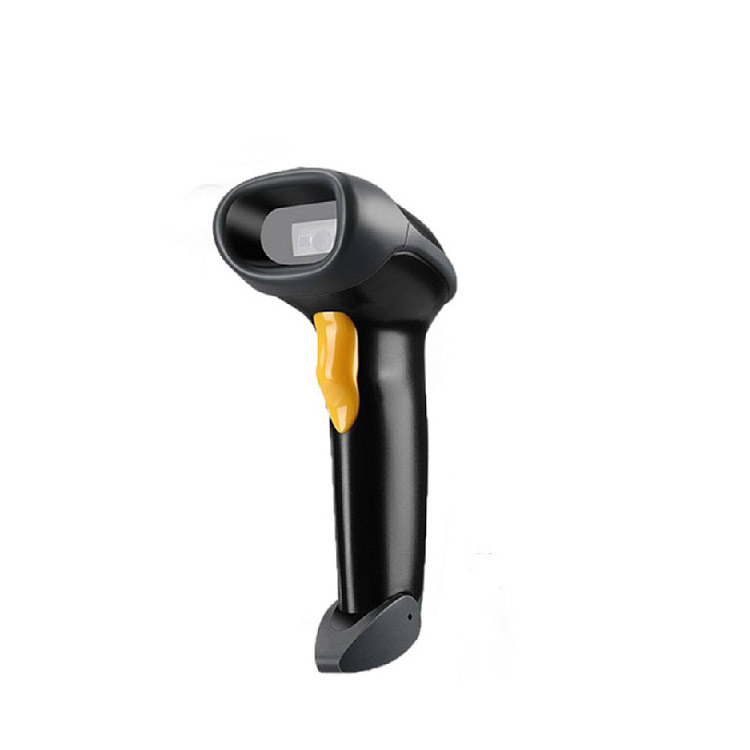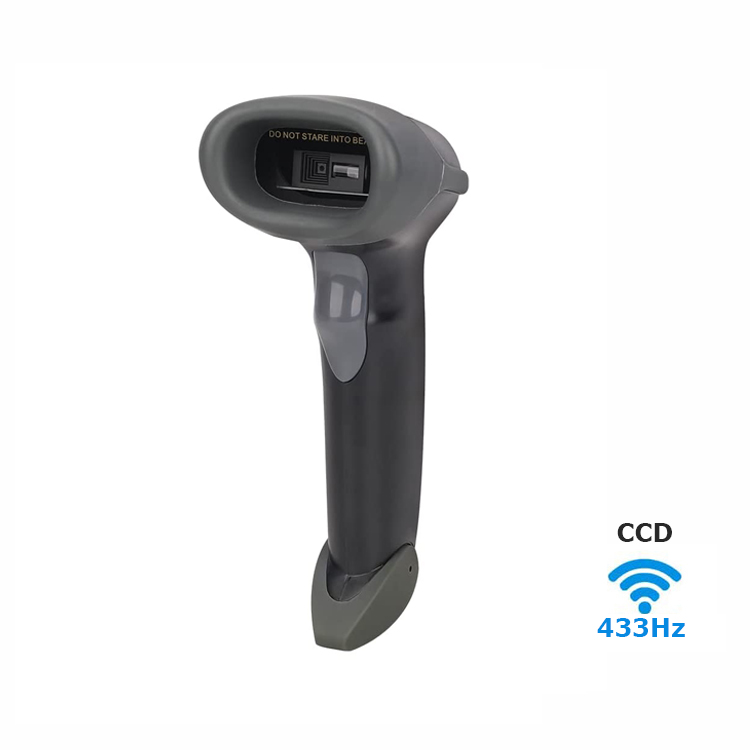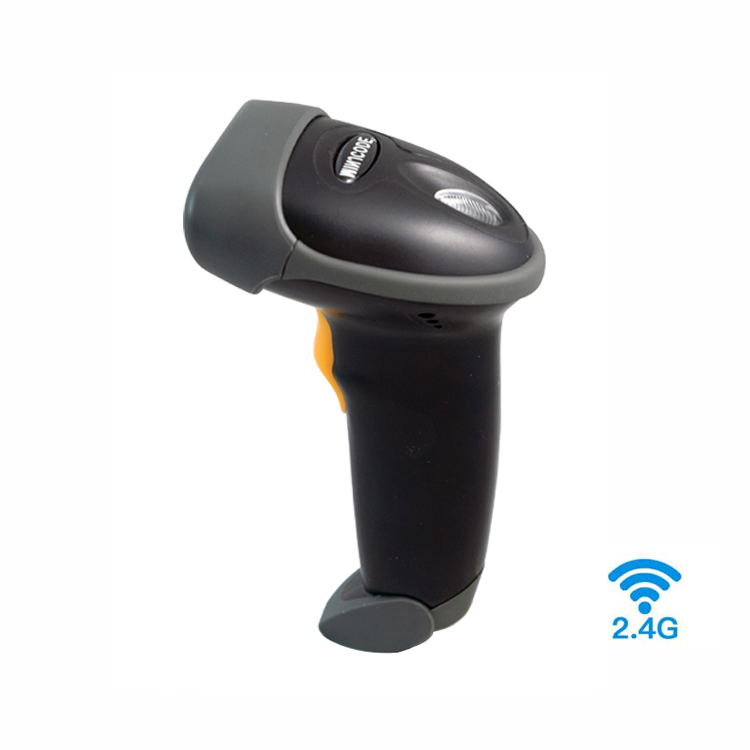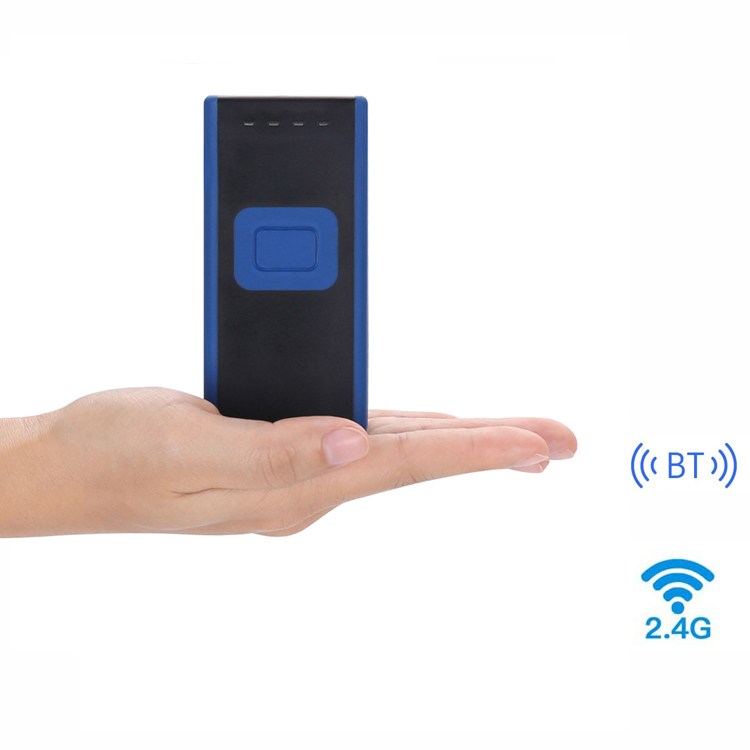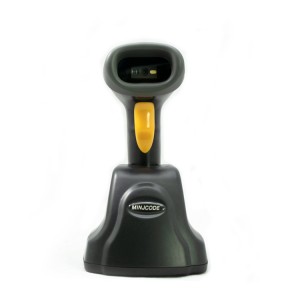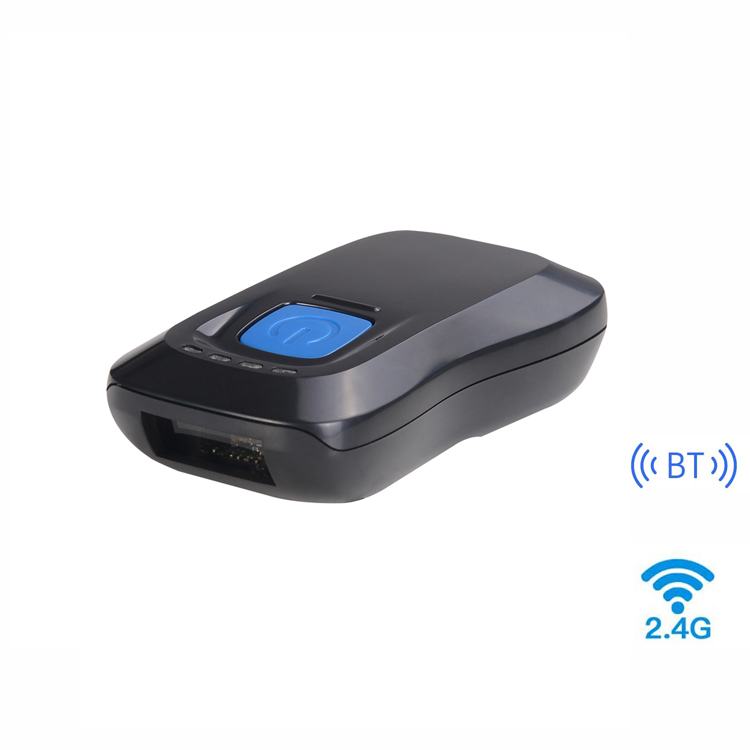Wireless barcode scanners currently on the market use the following main communication technologies
Bluetooth connectivity:
Bluetooth connectivity is a common way of connecting wireless scanners. It uses Bluetooth technology to wirelessly connect the scanner to the device. Bluetooth communication is characterised by its adaptability to all Bluetooth devices, high compatibility, medium transmission distance and moderate power consumption.
2.4G connectivity:
2.4G connectivity is a wireless connection method using the 2.4G wireless band. It has a long range and high transmission speed, making it suitable for applications with long distances or where high transmission rates are required. 2.4G connectivity typically uses a USB receiver to pair with the device, which must be connected to the device's USB port.
433 connection:
A 433 connection is a wireless connection method that uses the 433MHz radio band. It has a long transmission range and low power consumption, making it suitable for applications that require long distance transmission and low power consumption. The 433 connection is usually paired with a USB receiver that needs to be plugged into the USB port of the device.
It is important to choose the right connection for the specific requirements. For shorter distances and lower power requirements, choose a Bluetooth connection; for longer distances and higher data rates, choose a 2.4G connection; for longer distances and lower power requirements, choose a 433 connection. Factors such as device compatibility, cost and maintenance complexity should also be considered.
If you have any interest or query during the selection or use of any barcode scanner, please Click the link below send your inquiry to our official mail (admin@minj.cn) directly! MINJCODE is committed to the research and development of barcode scanner technology and application equipment, our company has 14 years of industry experience in the professional fields, and has been highly recognized by the majority of customers!
The differences are explained in more detail below:
Difference between 2.4G and Bluetooth:
2.4GHz wireless technology is a short-range wireless transmission technology, with two-way transmission, strong anti-interference, long transmission distance (short-range wireless technology range), low power consumption, etc. 2.4G technology can be contacted within 10 metres. to a computer.
Bluetooth technology is a wireless transmission protocol based on 2.4G technology. It differs from other 2.4G technologies due to the different protocol used and is referred to as Bluetooth technology.
In fact, Bluetooth and 2.4G wireless technology are two different terms. However, there is no difference between the two in terms of frequency, both are in the 2.4G band. Note that the 2.4G band does not mean that it is 2.4G. In fact, the Bluetooth standard is in the 2.402-2.480G bands. 2.4G products need to be equipped with a receiver. Today's 2.4G wireless mice come with a receiver; Bluetooth mice do not require a receiver and can be connected to any Bluetooth-enabled product. Most importantly, the receiver on a 2.4G wireless mouse can only work in a one-to-one mode, whereas the Bluetooth module can work in a one-to-many mode. The advantages come with disadvantages. Products using 2.4G technology are quick to connect, whereas products using Bluetooth technology require pairing, but 2.4G technology products also require a USB port, among other advantages and disadvantages. Currently, the main products using Bluetooth technology are Bluetooth headsets and Bluetooth speakers. 2.4G technology products are mainly wireless keyboards and mice.
Difference between Bluetooth and 433:
The main differences between Bluetooth and 433 are the radio bands they use, the distances covered and the power consumed.
1. Frequency band: Bluetooth uses the 2.4GHz band, while the 433 uses the 433MHz band. Bluetooth has a higher frequency and can be subject to more interference from physical obstacles, whereas the 433 has a lower frequency and transmission is more likely to penetrate walls and objects.
2. Transmission distance: Bluetooth has a typical range of 10 metres, whereas the 433 can reach several hundred metres. The 433 is therefore suitable for scenarios where long range transmission is required, such as outdoors or in large warehouses.
3. Power consumption: Bluetooth typically uses Bluetooth Low Energy (BLE) technology, which consumes relatively little power and is suitable for devices that are used for long periods of time. 433 also tends to use less power, but can be slightly higher than Bluetooth.
Overall, Bluetooth is suitable for short-range, low-power applications such as headsets, keyboards and mice. The 433 is suitable for applications that require long range and low power consumption, such as sensor data acquisition, automation control, etc.
As a professional scanner factory, we offer a wide range of scanner products with different connections to meet the needs of different customers and can provide customised solutions. To learn more about our products, please contact us.
If You Are in Business, You May Like
Recommend Reading
Post time: Jul-04-2023


